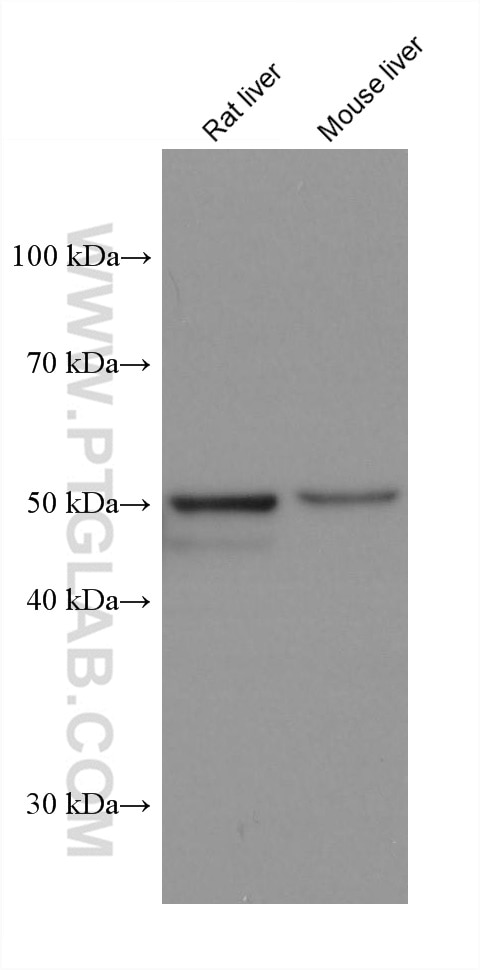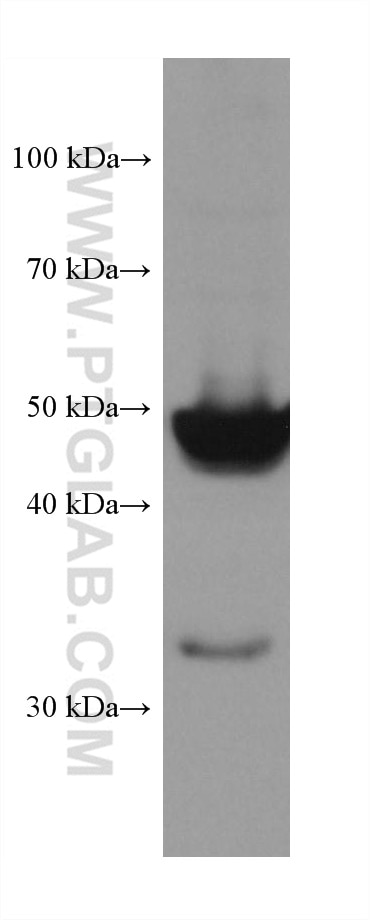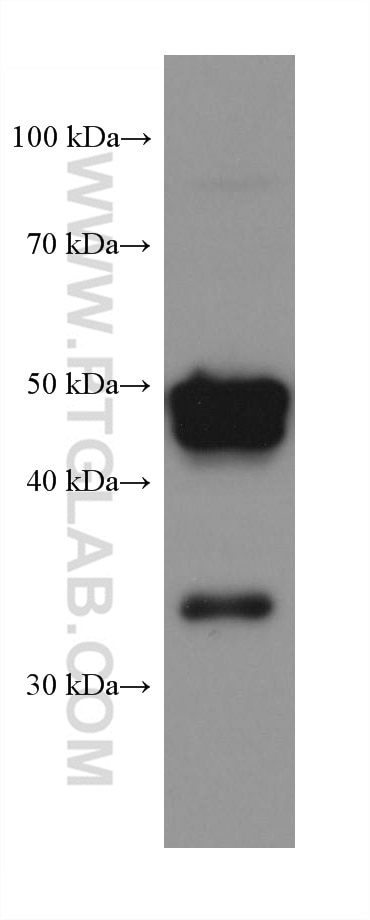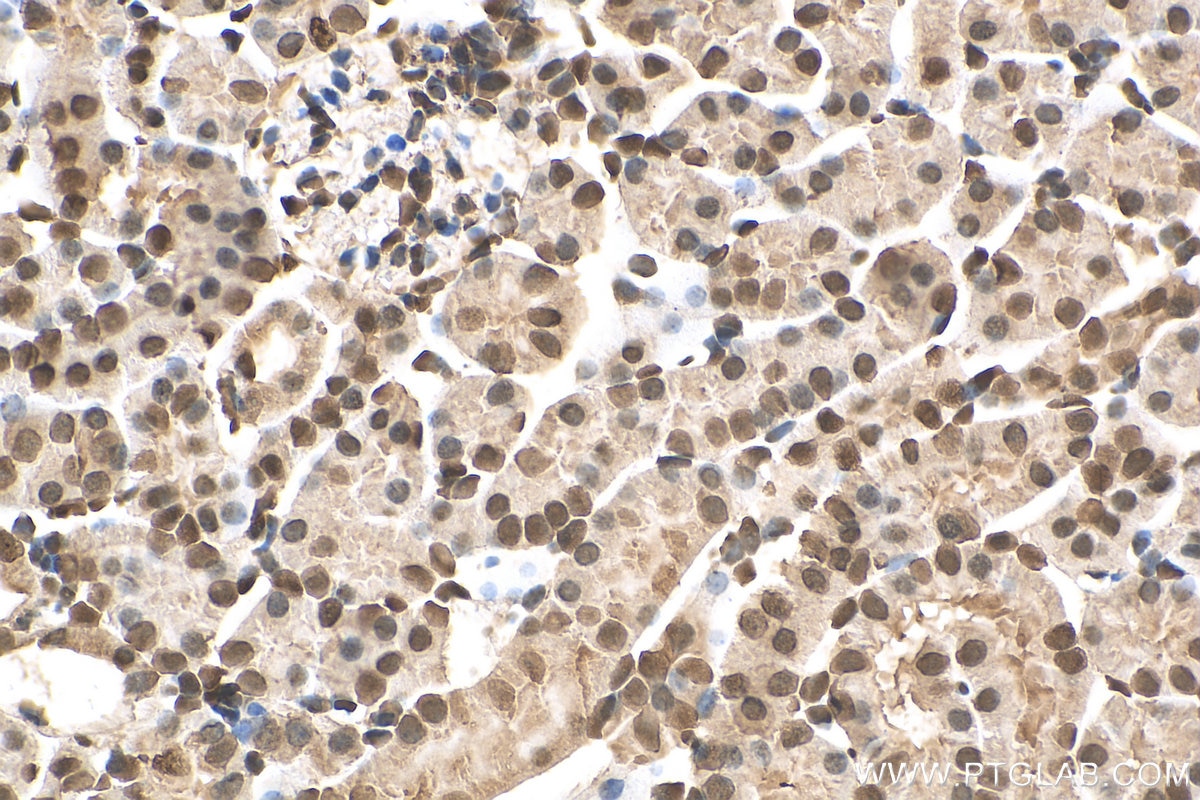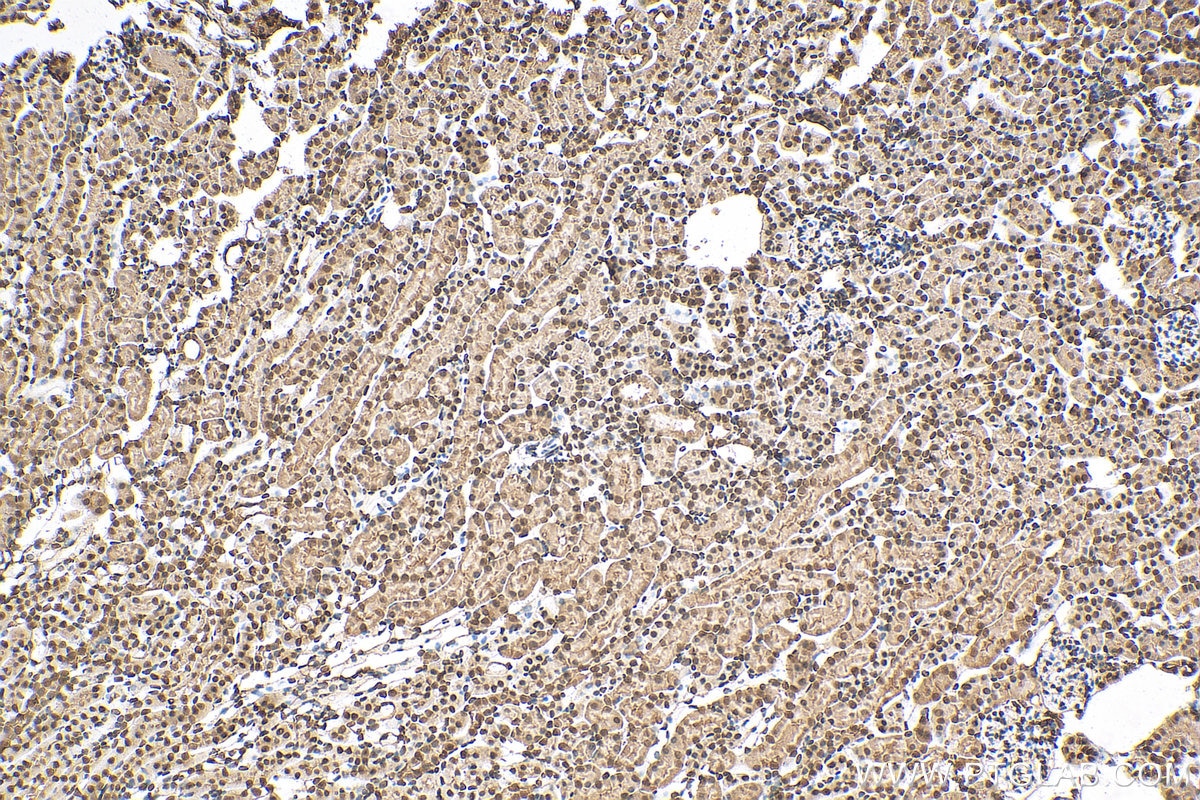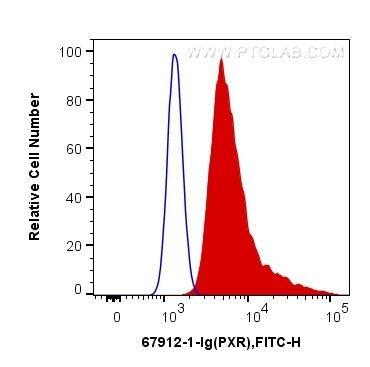Anticorps Monoclonal anti-PXR
PXR Monoclonal Antibody for WB, IHC, FC (Intra), ELISA
Hôte / Isotype
Mouse / IgG1
Réactivité testée
Humain, rat, souris
Applications
WB, IHC, IF, FC (Intra), IP, CoIP, ChIP, ELISA
Conjugaison
Non conjugué
CloneNo.
1G3A7
N° de cat : 67912-1-Ig
Synonymes
Galerie de données de validation
Applications testées
| Résultats positifs en WB | tissu hépatique de rat, cellules COLO 320, cellules MCF-7, tissu hépatique de souris |
| Résultats positifs en IHC | tissu rénal de souris, il est suggéré de démasquer l'antigène avec un tampon de TE buffer pH 9.0; (*) À défaut, 'le démasquage de l'antigène peut être 'effectué avec un tampon citrate pH 6,0. |
| Résultats positifs en FC (Intra) | cellules MCF-7, |
Dilution recommandée
| Application | Dilution |
|---|---|
| Western Blot (WB) | WB : 1:5000-1:50000 |
| Immunohistochimie (IHC) | IHC : 1:50-1:500 |
| Flow Cytometry (FC) (INTRA) | FC (INTRA) : 0.20 ug per 10^6 cells in a 100 µl suspension |
| It is recommended that this reagent should be titrated in each testing system to obtain optimal results. | |
| Sample-dependent, check data in validation data gallery | |
Applications publiées
| WB | See 12 publications below |
| IHC | See 1 publications below |
| IF | See 6 publications below |
| IP | See 1 publications below |
| CoIP | See 1 publications below |
| ChIP | See 1 publications below |
Informations sur le produit
67912-1-Ig cible PXR dans les applications de WB, IHC, IF, FC (Intra), IP, CoIP, ChIP, ELISA et montre une réactivité avec des échantillons Humain, rat, souris
| Réactivité | Humain, rat, souris |
| Réactivité citée | rat, Humain, souris |
| Hôte / Isotype | Mouse / IgG1 |
| Clonalité | Monoclonal |
| Type | Anticorps |
| Immunogène | PXR Protéine recombinante Ag7991 |
| Nom complet | nuclear receptor subfamily 1, group I, member 2 |
| Masse moléculaire calculée | 50 kDa |
| Poids moléculaire observé | 50 kDa |
| Numéro d’acquisition GenBank | BC017304 |
| Symbole du gène | PXR |
| Identification du gène (NCBI) | 8856 |
| Conjugaison | Non conjugué |
| Forme | Liquide |
| Méthode de purification | Purification par protéine A |
| Tampon de stockage | PBS with 0.02% sodium azide and 50% glycerol |
| Conditions de stockage | Stocker à -20°C. Stable pendant un an après l'expédition. L'aliquotage n'est pas nécessaire pour le stockage à -20oC Les 20ul contiennent 0,1% de BSA. |
Informations générales
Pregnane X receptor (PXR; NR1I2), a member of the nuclear receptor superfamily, plays a key role in the induction of genes involved in drug transport and metabolism. It modulates drug transport and metabolism through the regulation of target genes responsible for the transport and conversion of chemicals into metabolites that are more easily eliminated from the body [PMID: 22609277]. It is also emerging as an endobiotic receptor that regulates the inflammatory response. In addition, PXR acts as a transcription factor that activates the transcription of multiple genes involved in the metabolism and secretion of potentially harmful xenobiotics, drugs and endogenous compounds [PMID: 19297428].
Protocole
| Product Specific Protocols | |
|---|---|
| WB protocol for PXR antibody 67912-1-Ig | Download protocol |
| IHC protocol for PXR antibody 67912-1-Ig | Download protocol |
| FC protocol for PXR antibody 67912-1-Ig | Download protocol |
| Standard Protocols | |
|---|---|
| Click here to view our Standard Protocols |
Publications
| Species | Application | Title |
|---|---|---|
Adv Sci (Weinh) PXR Activation Relieves Deoxynivalenol-Induced Liver Oxidative Stress Via Malat1 LncRNA m6A Demethylation | ||
Front Pharmacol Bacteroides dorei BDX-01 alleviates DSS-induced experimental colitis in mice by regulating intestinal bile salt hydrolase activity and the FXR-NLRP3 signaling pathway | ||
Phytomedicine Panaxytriol upregulates CYP3A4 expression based on the interaction of PXR, CAR, HSP90α, and RXRα. | ||
Food Funct CD36 and DGAT2 facilitate the lipid-lowering effect of chitooligosaccharides via fatty acid intake and triglyceride synthesis signaling. | ||
J Ethnopharmacol Panaxytriol upregulates CYP3A4 expression through the interaction between nuclear regulators and DNA response elements | ||
Part Fibre Toxicol Type 1 diabetes and diet-induced obesity predispose C57BL/6J mice to PM2.5-induced lung injury: a comparative study |
